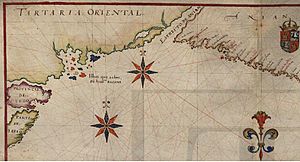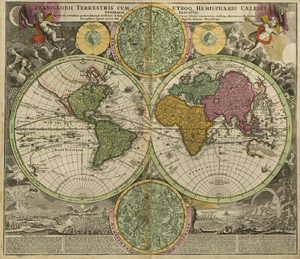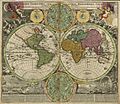João da Gama facts for kids
João da Gama (born around 1540 – died after 1591) was a Portuguese explorer and leader in the Far East during the late 1500s. He was the grandson of the famous explorer Vasco da Gama, who discovered the sea route to the East.
João da Gama made an amazing journey from Macau (in China) by sailing northeast. He went around Japan from the north and then crossed the Pacific Ocean. He sailed further north than any other European explorer had gone before! Because of this long journey, he also became one of the first people to sail all the way around the world, heading east. The lands he discovered northeast of Japan later became part of many legends, and other European countries searched for them for centuries.
Contents
Who Was João da Gama?
Not much is known about João da Gama's early life, but he was likely born around 1540. His parents were Guiomar de Vilhena and Francisco da Gama. Francisco was the second Count of Vidigueira and the son of the famous explorer Vasco da Gama.
João da Gama married Joana de Menezes, and they had a son named Vasco da Gama. Their son later became a captain in Chaul. João da Gama himself served as the captain of Malacca from 1578 to 1582. During his time there, he faced some challenges and was later asked to return to Lisbon to explain his actions.
The Exciting Journey to Japan
João da Gama later returned to the East. His goal was to take part in the important "voyage of Japan," also known as the nanban trade. This was a special trade route between Macau in China and Nagasaki in Japan, which Portugal had control over.
In 1588, João da Gama traveled to Macau. He decided to do something very risky and unusual. He planned an expedition to New Spain (which is now Mexico) at his own cost. This was against the rules at the time. He hoped to make a lot of money and find new opportunities.
People in Macau thought highly of João da Gama. The city council even wrote to the king in 1588, praising him and asking that he be allowed to keep his captaincy for life. They also believed that the profits from his voyages could help support churches, hospitals, and other good causes.
Crossing the Pacific Ocean

João da Gama knew his decision to sail to New Spain was against the law. Treaties between Portugal and Spain (which were then united under one king) did not allow trade between their different parts of the world. However, João da Gama might have felt he had no other choice. He may have been worried about facing problems if he returned to Goa.
In November 1588, João da Gama sent a letter to the king from Macau. He told the king he planned to go to Spain by way of Mexico. He said he wanted to personally report on his mission in China.
A Stormy Start and New Discoveries
After starting his voyage from Macau, João da Gama's ship was damaged by a strong storm called a typhoon. He had to find shelter on the island of Amakusa on the Japanese coast to make repairs.
In October 1589, he continued his journey. He reached Mexico in March 1590. He had crossed the Pacific Ocean at a much higher latitude (around 45° North) than other ships usually did. The usual route for the Manila galleons (Spanish ships) was closer to 40° North.
During his journey, da Gama touched a place now called Ezo, which is the island of Hokkaidō. He also found a "Land of Gama," which might have been some of the Kuril Islands. It's possible he sailed north along the Japanese coast and the Kuril Islands, perhaps even near the Aleutian Islands, before heading down to the American coast. His name was later given to a vague land he saw northeast of Japan on Portuguese maps.
When he arrived in Acapulco, Mexico, João da Gama managed to sell his goods. He made a good amount of money from the sale. However, because his voyage was against the rules, he was arrested. His ship and any remaining cargo were taken by the local authorities. Even though Portugal and Spain were united, his goods, maps, and navigation logs were taken away.
João da Gama was sent to Seville, Spain, to face a trial. He was one of the first people to complete a circumnavigation of the globe by sailing eastward. He likely died in Spain or Portugal sometime after 1591 or 1592, before his legal case was fully resolved.
The Mystery of "Gamaland"
In the 1700s, explorers from the Russian Empire began exploring the northern parts of the Pacific Ocean. One of their goals was to find the legendary "Joao-da-Gama-Land," also known as "Gamaland." This mythical land was believed to be located between Kamchatka and the American continent.
Many maps from that time showed a mix of real and imagined islands between Hokkaido and Kamchatka. These maps often confused the known Kuril Islands with other places like Company Land, State Island, Terra Esonis, and Gamaland. A map made around 1731 by Joseph Nicolas Delisle showed "the Land seen by Dom Juan de Gama," which seemed to stretch towards America. This map likely influenced later Russian expeditions, like the second voyage of Vitus Bering, as they searched for these northern lands.
Images for kids
-
Planiglobii Terrestris Cum Utroque Hemisphaerio Caelesti Generalis Exhibitio by Johann Baptiste Homann, Nuremberg 1707. Planisphere with map of the North American west coast, with both Californias (including US California to capes Mendoncino, Sebastiano and Blanco at 40º-45º N, at east-southeast of the imaginary strait) drawn as a single island, and with the note: "Costa Terrae borealis incognitae detected by D. João da Gama sailing from China to New Spain". Legend repeated in his other map of 1720, more extended to the northwest and already with both the Californias connected to mainland, in a northwest coast, possibly corresponding to the present day United States north coast and Canada
-
Map of the Asia for Guillaume Delisle, "Coste découverte par Dom Jean de Gama allant de la Chine à la Nouvelle Espagne".




